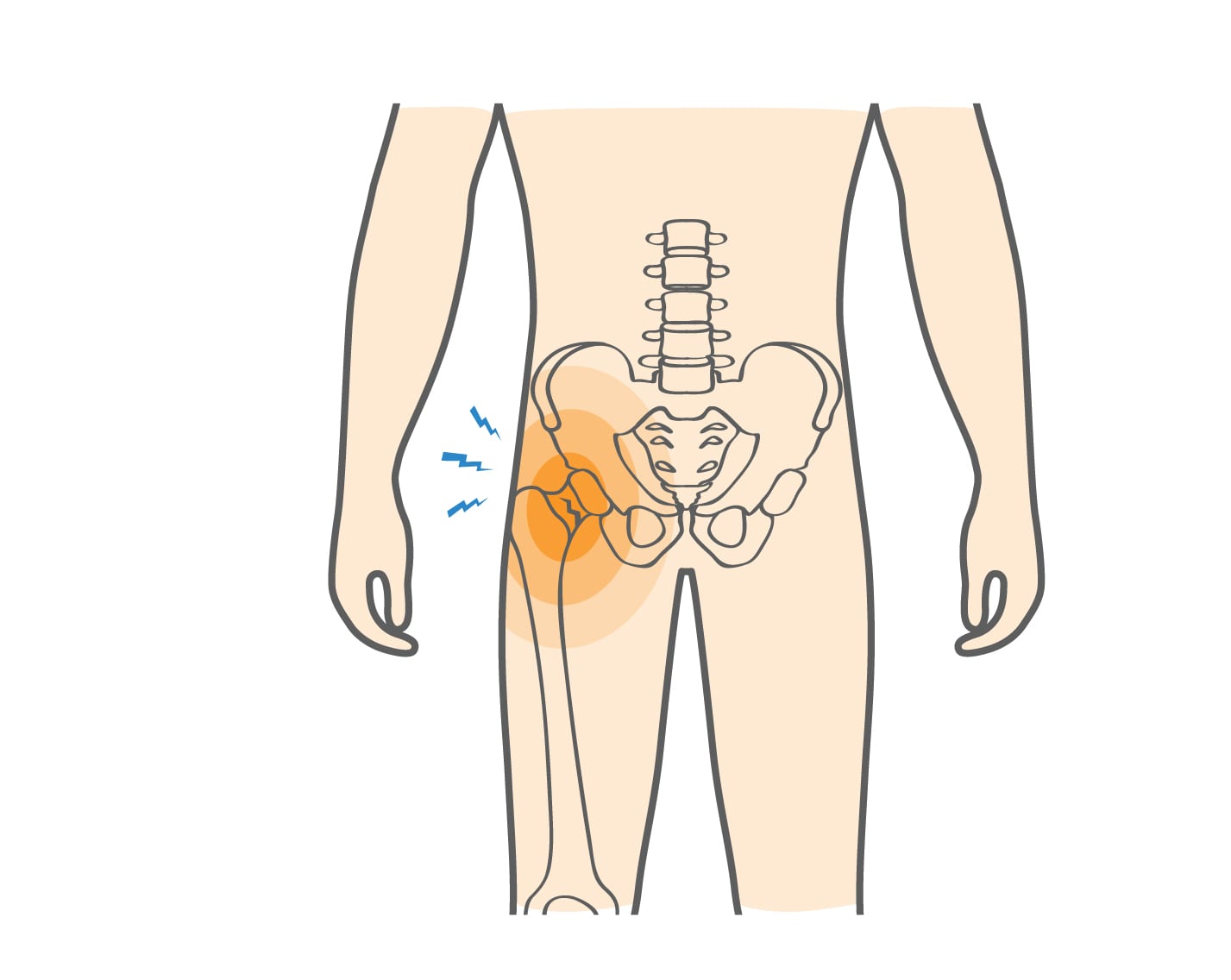The femur is the largest bone in your body, extending from the hip joint to the knee joint. The top part of the femur, called the femoral head, has a rounded ball shape that fits into a socket in the pelvis to form the “ball-and-socket” hip joint. The long part of your femur bone, which spans your upper leg, is called the femoral shaft. The femur bone also has a short, narrower section that connects the femoral head to the femoral shaft, called the femoral neck. This part of the femur can break (fracture) either due to repetitive stresses or from a collision injury on the field. Either way, femoral neck fractures require prompt medical attention. If a femoral neck fracture is left untreated, an interruption of blood flow to the femoral head can occur (called avascular necrosis). This can cause severe, lasting disability and even lead to the need for a total hip replacement.
Femoral neck fractures are classified into four grades of severity using the “Garden” system:
- Garden I: Partial fracture in which the femoral neck hasn’t been broken through completely.
- Garden II: Complete fracture in which the bone hasn’t moved out of place, called a nondisplaced fracture.
- Garden III: Complete fracture in which the broken ends of the bone have moved out of place but only only partially, considered a slightly to moderately displaced fracture.
- Garden IV: Complete fracture in which the broken ends of the bone have moved substantially and don’t line up, called a severely displaced fracture.
Displaced fractures (Garden III and Garden IV) are most common with acute injuries. In the early stages, stress fractures of the femoral neck are usually nondisplaced (Garden I or Garden II). However, without appropriate care, these fractures can become displaced over time.


